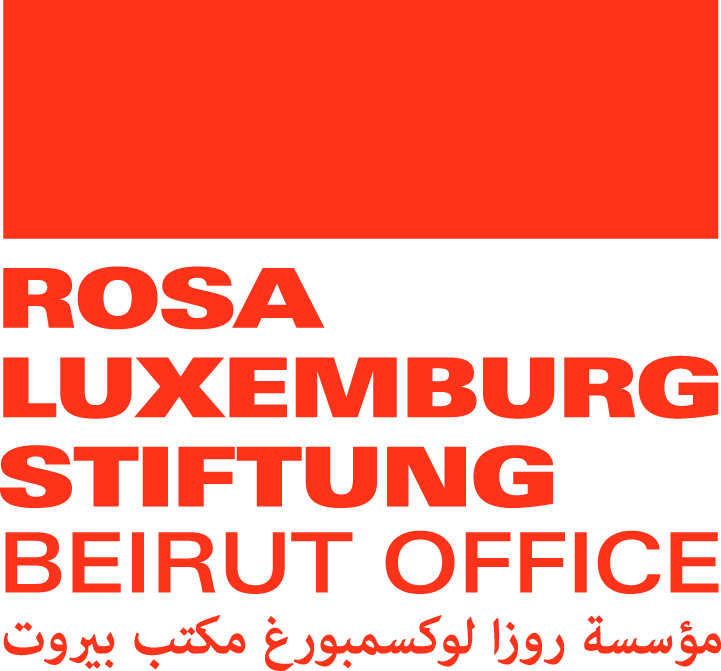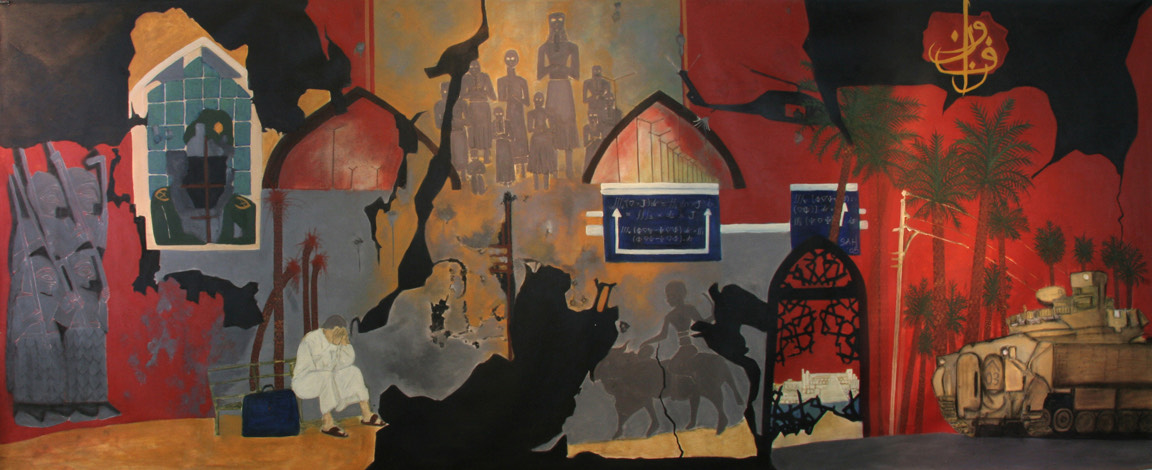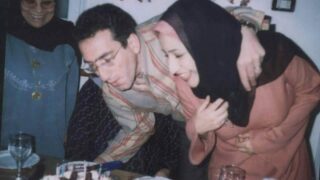
This publication has benefited from the support of the Rosa Luxemburg Foundation. This text may be reproduced in part or in full, provided the source is acknowledged.
This was the first war that Egyptians could watch live on television, after the spread of satellite dishes to many of their homes. The initial shock was profound, but it was only the beginning of other reverberations that would follow. In 2003, the air was filled with anticipation of a war in Iraq, prompting the resurgence of numerous questions within the Egyptian sphere related to the past, present, and future of the country. Some of these questions pertained to the formal relationship between the two regimes in Egypt and Iraq, along with the lingering wound caused by Egypt's participation in a previous US-led war on Iraq in 1991 for the liberation of Kuwait. At the time, Egypt was promised the forgiveness of its debt, which amounted to approximately $34 billion, by the Paris Club. The prospect of another US-led war on Iraq raised concerns about the possibility of Egypt’s involvement in another shameful position, such as allowing American ships to pass through the Suez Canal.
Another pressing question pertained to the consequences of this impending war, considering that nearly 4 million Egyptian workers had returned from Iraq in the early 1990s without receiving their due payments (an issue that remains unresolved to this day). However, it was the popular response to the war quickly became the central issue and the genuine reflection of the conflict. The public’s emotional engagement was explosive, characterized by a relentless determination to affect change and overthrow a dictatorial regime that aligned itself with the Zionist-American alliance.
The Egyptian regime found itself at a crossroads during the early 2000s, as the world grappled with the aftermath of the 9/11 attacks and the subsequent “Either you are with us, or you are with the terrorists” doctrine put forth by the United States. This doctrine was swiftly translated into military action, culminating in the direct bombing of Afghanistan.
The following are the main axes along which the war on Iraq affected Egypt and the lives of Egyptians.
Official Relations
Egypt's stance on the unfolding international events was marked by ambiguity. The government’s political performance was passive, neither vocally supporting nor objecting to any action. Egypt joined the non-permanent members of the UN Security Council in endorsing a draft international statement which called on the US and Western nations to continue to inspect weapons of mass destruction (WMD) in Iraq instead of opting for a military invasion. Even after the American-British decision to wage war on Iraq materialized without international consensus, Egypt continued to fail in articulating a clear position.
On the other hand, Egypt’s minister of exterior promoted that the government’s decision to allow US ships to pass through the Suez Canal was sound and wise, despite widespread Arab and international public anger at the decision and calls to disallow the access of the military vessels. The head of the Suez Canal Authority (SCA) stated that demands to prevent American vessels from using the canal were “a trap that the Egyptian authority would not fall into.” He stressed the SCA’s commitment to international conventions and treaties, particularly the Constantinople Convention which guarantees the right of free and safe navigation for all ships without distinction of flag (1).
Egypt’s diplomatic performance had a profound impact on its foreign policy, particularly in its approach to regional issues, most importantly the Palestinian cause. Since then and until the moment of the January Revolution in 2011, the broken record of “Egypt's security first” resurfaced in official media discourse, cautioning against supporting Arab causes at the expense of national interests. It was that same argument that was used to justify the closure of the Rafah crossing in the face of Gazans for years, since Hamas’s rise to power in Gaza. The border closure became a participation in the blockade on Gaza and was upheld even during Israeli bombings of the strip, until Gazans themselves tore down part of the wall at the border in 2009.
Twenty years have elapsed since the US invasion of Iraq… Two decades during which Egypt has witnessed profound changes and turbulent periods marked by waves that alternatingly induced and stifled change. Iraq was an open wound that sparked the flame of rage in Egypt, where efforts to overthrow the oppressive regime lead to the rise and fall of the Arab Spring across the region.
The economic crisis was exacerbated by the loss of a major source of remittances from Egyptians living abroad. Most estimates agree that there were around 4 million Egyptian workers, employees, and investors in Iraq until the early 1990s. Egyptian returnees were never able to recover their financial dues despite persistent demands and repeated promises to pay them.
This trend, referred to by the Egyptian regime as “prioritizing national interests,” remained prevalent. However, several opposition voices argued that this policy was based on senseless subordination to Western allies and could ultimately harm Egypt's national security. While this argument temporarily receded in the years 2011 and 2012, it resurfaced and has continued to shape both official and popular discourses since 2013. President El-Sissi's statement, “We are not better than Syria and Iraq,” was a foundational statement for this argument. Consequently, the Iraq War and its outcomes have served as a giant scarecrow wielded by an authoritarian regime in Egypt, which consistently promoted the "security first" rhetoric.
The economic dilemma
During the years of the US sanctions on Iraq in the early 1990s, there were no official Egyptian-Iraqi relations in place between the two countries. Nevertheless, the war on Iraq had immediate indirect, yet lasting impacts on Egypt's economy in two major ways.
One of the two main consequences was the deepening of the economic crisis due to the loss of a major source of remittances from Egyptians living abroad. These remittances constituted one of the primary sources of hard currency for the Egyptian state. Most estimates agree that there were around 4 million Egyptian workers, employees, and investors in Iraq until the early 1990s. However, Egyptian returnees from Iraq in the early 1990s were never able to recover their deferred financial dues despite persistent demands and repeated promises to pay them. In 2010, joint Egyptian-Iraqi committees were established to assess these deferred assets, taking into account their accumulated interest. The assets amounted to an estimated total of more than $60 million (2).
Not only did the Egyptian economy lose remittances from workers in Iraq, but trade relations and business partnerships between the two countries faltered. The volume of trade exchange between Iraq and Egypt during the period 1997-2001 amounted to approximately $1.402 billion, a noteworthy stance for Egypt, considering that this was during a time of US sanctions on Iraq. In 2001, the two parties signed a protocol to liberalize all exchanged goods of national origin in both countries from customs and non-tariff restrictions.
Selling Egypt's Assets: Who Has Ownership?
14-06-2022
Official data show a subsequent rise in the curve of trade exchanges a few years later, indicating a recovery from the previous crisis period. During the period 2005-2008, the trade exchange saw an upward trend with an annual growth rate of 77 percent. The total trade exchange in 2009 alone reached $370 million. Since 2021, the Egyptian state has been working towards concluding new economic and development partnerships after a tripartite summit in Baghdad that included the leaders of Iraq, Egypt, and Jordan.
The broken record of “Egypt's security first” resurfaced in official media discourse, cautioning against supporting Arab causes at the expense of national interests. It was that same discourse that was used to justify the closure of the Rafah crossing in the face of Gazans for years. The closure became a participation in the blockade on Gaza, persisting even during Israeli bombings.
On the other hand, the official, toned-down political position of Egypt and its persistence as a strategic ally of the US, before and after the 2003 war, led to the multiplication of economic partnerships with this “ally.” The QIZ agreement was the jackpot for those seeking quick profit in the Egyptian market. It is a protocol that was signed in February 2005, by which Egyptian companies are allowed to export to the US markets without customs, provided that there is an Israeli input of up to 35 percent of the product, according to a World Bank specialized report. After the agreement took effect, the total value of textile and clothing exports from the qualifying industrial zone increased from approximately $500 million in 2006 to $900 million in 2011, an increase of 45 percent. Since then, there has been no further growth in QIZ exports, and the level has remained almost stagnant since 2012, after pressure within the government to reduce the Israeli content to only 10 percent.
A popular awakening
Perhaps this was the most significant reverberation made by the Iraq war in Egypt. Since the Peace Treaty between Egypt and Israel in 1979 and with the tightening of the security grip in Egypt and the prohibition of any discussion regarding a peaceful transfer of power in the country, popular political forces became more present. New movements and parties emerged and resisted all forms of normalization, while supporting the Palestinian resistance and rejecting Zionist aggressions on the Arab region.
A young generation emerged from Egypt’s universities into the political arena, following the defeat of June 1967. Several popular committees were formed, and they engaged in political, social, cultural, and media activities. However, protesting in the streets remained a big red line for all opposition groups, though they sometimes managed to breach the prohibition on specific events, in front of university gates, or at book fairs. However, the price they paid for their protests was always heavy.
In scarce breakthroughs, some of the opposition leaders, including parliamentarians and artists, managed to form delegations to Iraq or Gaza under the banner of “breaking the blockade.” In December 1998, an Egyptian delegation comprised of parliamentarians, intellectuals, and artists visited Iraq to express solidarity with the Iraqi people in response to the international economic blockade they were facing. In 2009, a similar delegation visited Gaza in solidarity with the Palestinian people after the Israeli aggression called “Cast Lead.” The delegation condemned the Egyptian regime's involvement in the blockade by closing the Rafah crossing.
President El-Sissi's statement, “We are not better than Syria and Iraq,” was a foundational statement for the argument of “national interest first.” Consequently, the Iraq War and its outcomes served as a giant scarecrow wielded by an authoritarian regime in Egypt, which consistently promoted the "security first" rhetoric.
The official, toned-down political position of Egypt and its persistence as a strategic ally of the US before and after the 2003 war led to the multiplication of economic partnerships with this “ally.” The QIZ agreement was the primary outcome, signed in February 2005, by which Egyptian companies are allowed to export to the American market without customs, provided that there is an Israeli input of up to 35 percent of the product.
The delegations expressed the true sentiments of the Egyptian people, while public spaces, in particular, Tahrir Square, remained off-limits to the people. The square had not seen political action since the truncated popular uprising of January 18-19, 1977, known in political groups as the “Bread and Freedom Demonstrations,” and labeled by the State as the “Thieves’ Uprising.”
The Egyptian people, particularly the country’s political and cultural groups, closely monitored the rapid developments of the US attack on Afghanistan, carried out under the pretext of combating terrorism, which was accompanied by an international political climate that was laying the groundwork for the US invasion of Iraq.
On February 15, 2003, a global call was made for demonstrations against an international resolution that authorized a US invasion of Iraq. This call was championed by anti-globalization, anti-imperialism solidarity movements worldwide. Massive demonstrations unfolded on that day in 60 capitals worldwide, drawing approximately 16 million participants. In Egypt, some opposition figures attempted to organize a similar event but ultimately failed. The head of the Medical Syndicate at the time submitted an official request to the Egyptian Ministry of Interior to open Cairo Stadium to the public on that day to allow the expression of popular opposition to the impending US war on Iraq. As expected, his request was denied.
It appeared that the simmering anger of the opposition and its eagerness for action remained stifled by the tight grip of security forces. Then came March 20, 2003. The world awoke to the sight of phosphorus bombs blazing the pre-dawn skies over Iraq. Almost spontaneously, Egyptian opposition groups swiftly reached out to one another and flocked to Tahrir Square, in an impressive act of impromptu organizational collaboration that warrants further examination. This spontaneous response, not anticipated by security forces, allowed hundreds of activists, political figures, prominent community leaders, and youth to gather in Tahrir Square. Young people and students in particular had become prominent political participants following the Al-Aqsa Intifada in Palestine at the end of 2000, giving rise to a new generation of activists within Egyptian universities.
People and groups of diverse political affiliations, genders, and ages met in the heart of Tahrir Square on the afternoon of March 20, 2003. While their overarching message was to protest the US invasion of Iraq, their anger was fuelled by their deep concern for Egypt itself and their own position in the unfolding crisis. Chants such as “They who strike in Iraq, tomorrow will strike in Al-Warraq!” (a Cairo district), and “Those who have betrayed their promises, those who have stolen everything, those who have forsaken their Arab identity, those who have become slaves to the West… They do not represent us!” echoed through the square. Emotions of anger blended with feelings of pride on a day that bore witness to both the rejection of the US war and the celebration of spontaneous Egyptian popular action that had found its way to Tahrir Square.
As expected, the security forces regained strict control of the street in a matter of a few hours. Despite that, that brief moment implied the emergence of new remarkable and creative political courses. The opposition groups involved became engaged in their respective frameworks, unions, syndicates, and movements. Small demonstrations persisted for two days in front of the ruling party headquarters and parliament and were attended by no more than a handful of protesters. The security forces responded with mass arrests and brutal beatings, even targeting figures like Hamdeen Sabahi, who was a parliamentarian at the time and would later run for president. The security apparatus widened its grip beyond arbitrary street arrests and started raiding homes as well, targeting anyone who had showed signs of involvement and activists or figures who were deemed as potential leaders capable of mobilizing masses. As they raided and arrested people at the break of dawn, scenes of a war and violence were unfolding on every television screen.
On March 20, 2003, the world awoke to the sight of phosphorus bombs blazing the pre-dawn skies over Iraq. Almost spontaneously, Egyptian opposition groups swiftly reached out to one another and flocked to Tahrir Square, in an impressive act of impromptu organizational collaboration.
“They who strike in Iraq, tomorrow will strike in Al-Warraq”, they chanted. Emotions of anger blended with feelings of pride on a day that bore witness to both the rejection of the US war and the celebration of Egyptian popular spontaneity that had found its way to Tahrir Square.
Baghdad fell on April 9, 2003, and although only students were able to protest the war within the walls of their universities, it was evident that the winds of change had started to blow. Revolutionary energy was eager to be released. Inside prison cells and small apartments, secret meetings and lively discussions were held away from the eyes of the security forces, and an opportunity for political action seemed ripe.
In tandem with the political course, a lawsuit was filed against the Egyptian government demanding that US warships be prevented from passing through the Suez Canal. The lawsuit called on the government not to hide behind international agreements that supposedly require its neutrality in the event of conflict, because in reality, Egyptian national security and the country’s economy were being jeopardized by the war, which meant that Egypt had a legal right to prohibit the passage of American vessels (3).
Several press conferences, including one famous speech by Secretary of State Condoleezza Rice at the American University in Cairo, tried to campaign for justifications for the US invasion by attacking dictatorial regimes in the region, and saying that it is no longer acceptable to continue close relations with those regimes in order to maintain American interests, while this undemocratic atmosphere leads to the formation of terrorist groups that attack the West. This was often rumoured to be the reason behind the attacks on the World Trade Center in New York on September 11, 2001 (4).
Born from the shockwave
Just as is expected in periods of profound upheaval, debates ensued within Egyptian popular opposition political circles on how to respond to that turning point. Discussions were directed at rejecting American global policies while simultaneously addressing the need for escalating resistance against Egypt's authoritarian and subservient local policies. It was from that dialogue that Kifaya Movement emerged in September 2004, based on the stance of “No extension [to the presidential term], no inheritance [of power],” with signatures of 300 Egyptian politicians and intellectuals who demanded the President step down from power.
This occurred in parallel with two key factors. First, the opposition perceived a new preparedness on the part of the regime to introduce some political changes in response to American pressure. Simultaneously, political and economic arrangements were being made, foreshadowing a deeper role for the Mubarak family in dominating Egypt and its economy (5).
On one hand, the regime proposed a popular referendum on a constitutional amendment to allow the direct, general secret ballot election of the President of the Republic by all eligible voters, as opposed to the previous method of selecting a president through a referendum after one name had been nominated by the People’s Assembly. On the other hand, the National Party’s plot was not very subtle. It started arrangements for the president's youngest son, Gamal, to take control of the ministries, with the help of a handful of powerful businessmen, to start implementing his economic and political visions as he prepared to declare his candidacy.
The US invasion of Iraq marked a pivotal moment that presented an opportunity for shifting the political scene in Egypt. New generations and opposition groups were coalescing like a growing snowball, propelling waves of momentum, with each wave ushering in a larger one. It was in this climate that Kifaya Movement emerged, birthing several other groups. The most notable of these groups was the influential Youth for Change, whose active presence helped mobilize the opposition and raise voices against a proposed popular referendum on constitutional amendments, which they regarded as a farce. The movement also directed attention at the widespread electoral fraud during the 2005 presidential election which ended with the arrest of presidential candidate, Ayman Nour.
“The story goes… They robbed our country, those bastards! Once upon a time… They robbed our country, those Americans! The story goes that generation after generation… We saw Israel take Palestine. Troops took Baghdad in the afternoon… And at sunset, they were ready to take Egypt!” In January 2011, the song was revived in the squares of the revolution with new lyrics about the Arab Spring.
A comprehensive workers' movement also crystallized and headquartered itself at the Parliament’s sidewalk. Then came a big wave of protests on April 6, 2008, when opposition forces called for a general strike. The loudest outcry came from the workers of Ghazl el-Mahalla, a city famous for its textile industry. Afterwards, the National Association for Change was established, and calls emerged for the return of the Egyptian politician Mohamed el-Baradei to Egypt to run for president, followed by vigils led by young activists against torture in police stations in 2010, under the slogan “We are all Khaled Said .” (6)
Consecutive and impactful waves of protests followed, beginning with a few hundred people gathering in Tahrir Square to express their anger at the US invasion of Iraq in March 2003. These protests evolved into millions gathering on the Friday of Anger on April 28, 2011, demanding the overthrow of the regime. As the people took control of Tahrir Square, the flags of Palestine and Iraq became a common sight, with protesters chanting against the Zionist-imperialist alliance as fervently as they did against their own authoritarian regimes.
The features of this new scene took shape, evolved, and found their place in Tahrir Square. It was not just an Egyptian event, but an Arab one par excellence. In Tahrir Square, the people voiced the stories and woes shared by all the peoples of our region. Eskenderella, a band that became the voice of the youth at the time of the revolution, described that emerging scene with rare clarity in their song “The Story Goes.” In 2003, they sang against the backdrop of the US occupation of Iraq:
The story goes… Guess what? They robbed our country, those bastards!
The story goes… Once upon a time… They robbed our country, those Americans!
The story goes that generation after generation… Israel stole Palestine.
Troops took Baghdad in the afternoon… And at sunset, they were ready to take Egypt!
“Youhka Anna” (The story goes) by Eskenderella – The original version
In January 2011, the song was revived in the squares of the revolution in a newer version in which more optimistic verses about the Arab Spring were added.
The story goes… Guess what? Our people reached for the light with their bare hands.
The story goes… Once upon a time… The people’s wishes were heard demands.
The story goes… Generations of Egyptians were reborn in Tahrir.
The story goes… The sun of the revolution was created by a martyr.
The story goes… Oh, liberty! Ours is an Arab revolution.
From dawn to morn to noon to evening.
From Tunisia to Libya to Syria to Egypt.
Youhka Anna” (The story goes) by Eskenderella – The post-revolution version
***
Twenty years have passed since the US invasion of Iraq… Two decades during which Egypt has witnessed profound changes and turbulent periods marked by waves that alternatingly induced and stifled change. Iraq was the wound that sparked the flame of rage in Egypt, where efforts to overthrow the suffocating oppressive forces lead to the outbreak of the Arab Spring and its subsequent decline across the region.
Regrettably, the situation in Egypt has culminated in this surreal scenario: the current President of the Republic, wielding military authority, emerges from the depths of the very deep state against which the Egyptian people have rebelled in 2011. He cautions against the dangerous allure/illusion of change that could potentially lead the nation to the “tragic fate of Iraq.” It is as though Iraq, a nation that has endured two decades of devastating tragedies, still possesses the capacity, albeit in reverse, to serve as a guiding beacon, pointing the Egyptian compass in the direction the country must follow.
The content of this publication is the sole responsibility of Assafir Al-Arabi and Rosa Luxemburg Foundation cannot accept any liability for it.
Translated from Arabic by Sabah Jalloul
Published in Assafir Al-Arabi on 24/08/2023
The folder “Twenty Years since the War on Iraq” is a joint production between Assafir Al-Arabi and Jummar, with the support of the Rosa Luxemburg Foundation.
1- "ممشيش": المطالبة بمنع السفن الحربية من عبور قناة السويس "فخ لن نقع فيه"، موقع "المصري اليوم"، 02/09/2013.
2- “Egyptians receive a third of deferred Iraqi transfers: Central bank”, Ahram Online, 08/04/2012.
3-منى سليم، "أعوام السلام الدافىء مع إسرائيل والأثر الاقتصادي: مصر مثالاً"، موقع "السفير العربي"، 12/05/2022.
4- Secretary Condoleezza Rice, “Remarks at the American University in Cairo”, U.S Department of State, Archive, 20/06/2005.
5- “Who’s isolating whom?” The Economist, 23/02/2006.
6- Khaled Said was an Egyptian man whose death in police custody in Alexandria on 6 June 2010 helped stir up the January 25 Revolution of 2011. [Translator’s note].







